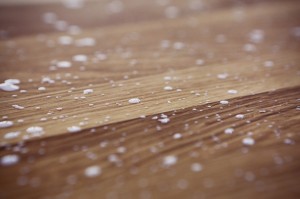- Calls to this hotline are currently being directed to Within Health or Eating Disorder Solutions
- Representatives are standing by 24/7 to help answer your questions
- All calls are confidential and HIPAA compliant
- There is no obligation or cost to call
- Eating Disorder Hope does not receive any commissions or fees dependent upon which provider you select
- Additional treatment providers are located on our directory or samhsa.gov
PICA: A Lesser Known, Highly Disturbing Eating Disorder
Contributor: Dr. Kim Dennis

Much less is known about binge eating disorder, which coincidently is the most common eating disorder in the United States.
A Baffling Disorder
Most eating disorders are anathema to those who do not have one, but certain food-related illnesses are particularly alarming and baffling to the public at large. PICA is certainly one of them.
This is typically defined as the persistent ingestion of non-nutritive substances for at least one month at an age for which this behavior is developmentally inappropriate. In other words, it is the ingestation of items or substances that are not food.
The list includes:
- Dirt
- Sand
- Stones
- Pebbles
- Hair
- Feces
- Lead
- Laundry starch
- Vinyl gloves
- Plastic
- Pencil erasers
- Fingernails
- Paper
- Paint chips
- Coal
- Chalk
- Wood
- Plaster
- Light bulbs
- Needles
- String
- Cigarette butts
- Wire
- Burnt matches
Causes of PICA Behavior

Children would consume paint chips and suffer a variety of negative medical and cognitive consequences. Another population somewhat at risk is pregnant women. This is particularly the case in the first trimester of pregnancy.
Although medical professionals and researchers are confounded as to what inspires the urge, women can suddenly crave such items as coffee grounds or laundry detergent.
Common Reasons for PICA Behavior
In the general population, it is thought that the most common reason for PICA behavior is anemia or the absence or lack of important minerals, such as iron or zinc. Those in the medical profession also believe that some engage in this activity simply because they like the taste, texture or smell of the things they consume.
Interestingly, the act is actually reinforcing in that ongoing consumption of these items ultimately activates the reward circuit in the brain, causing the individual to crave the substance even more.
The Prevalence of PICA
The prevalence of PICA activity is unknown since it often goes unreported. However, it is most commonly diagnosed in women and children, especially those with mental and developmental delays, particularly those with schizophrenia and autism.
Considering the unusual items that might be consumed, it is no surprise that PICA is viewed as an extremely dangerous behavior. Possible complications include:
Poisoning
Items, such as paint chips, may contain lead or other toxic substances. Consuming these substances can poison the individual. In a child, this toxic environment can translate into learning disabilities, brain damage or death.
Dental Damage
Permanent harm to the teeth is not unusual. Human beings are meant to eat real food, not rocks and stones; broken teeth often result from this behavior.
Nutritional Deficiencies

Physical Damage to the Body
Eating objects that cannot be digested, such as plastic or metal, can cause constipation or blockages in the digestive tract, including the intestines and bowels. Even worse, hard or sharp objects, such as glass or needles, can perforate the lining of the intestines.
Dangerous Infection
Bacteria or parasites from dirt or other objects can cause infections; some can damage the kidneys or liver.
Treatment
The first step is to obtain a medical evaluation if PICA is suspected. This may include an assessment for possible anemia, intestinal blockages, or potential toxicity from ingested substances.
A complete medical history should be taken as well as a physical exam. X-rays can reveal items or blockages in the intestinal tract, while blood tests can determine possible anemia, toxins and other substances in the blood.
PICA, like most eating disorders, rarely resolves on its own. Treatment is recommended. If you, or someone you know, routinely eats objects or substances that are not food, please consult with a health care provider.
Last Updated & Reviewed By: Jacquelyn Ekern, MS, LPC on November 12th, 2014
Published on EatingDisorderHope.com
